After the era of Thomas Schaaf, crowned with success, Werder struggled to escape from the battle against relegation. Several coaches were not able to fulfil the expectations and had to leave the club due to missing success.
However, Kohfeldt lets the supporters dream again as he was able to awake the offensive minded Werder Bremen one knows from the glory times. From a tactical point of view there are many parallels between Schaaf’s Werder and the one of Kohfeldt. But is Kohfeldt’s approach a promising one or is Werder stuck in an inevitable downward spiral?
The famous Werder diamond
Thomas Schaaf was one of the representatives of the 4-diamond-2 formation. When Kohfeldt took over, he established a system that resembles the midfield diamond in the possession phase.
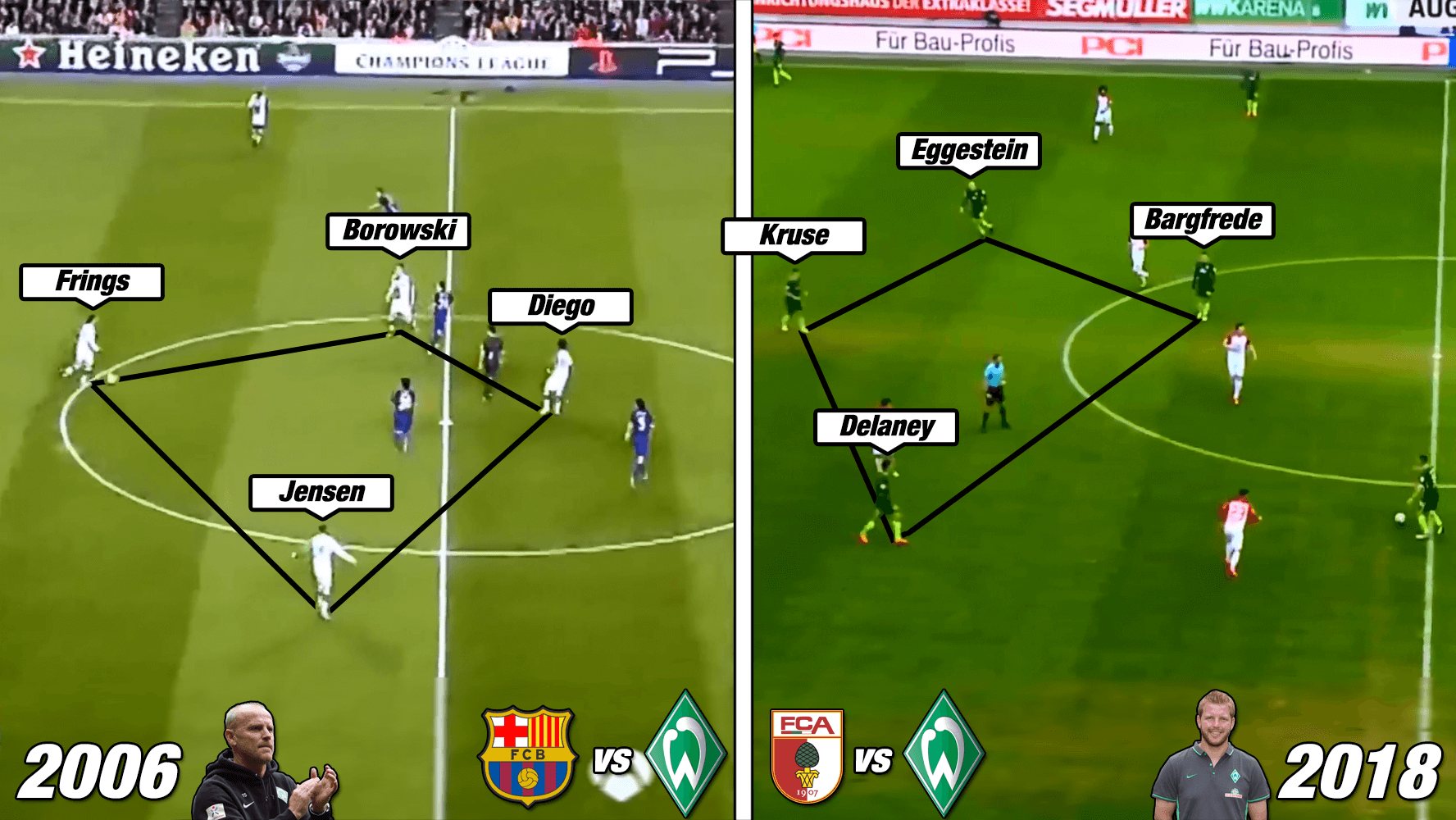
He made use of the combinative skills of Max Kruse and gave him the role as a fluid playmaker. Actually, Werder deployed a 4-1-4-1 formation with Kruse as the striker. However, being in possession Kruse will drop situationally and leave the two wingers as strikers up top. This situationally creates a dynamic 4-diamond-2 as you can see above.
Style of play
In Werder’s 4-3-3, wingers and full-backs provide full width. With quick switches of play, Die Grün-Weißen attempt to either breakthrough on the flanks with overlapping runs of the full-backs or to exploit the created space in the center with deep runs of central midfielders. With four central players Werder Bremen causes problems for the opposition central midfield mostly containing only two or three players.
One disadvantage of this philosophy might be missing depth in central areas. For that reason, SC Freiburg was able to prevent Werder from creating chances on a narrow pitch setting up a low block last season.
Unlike most sides using a 4-diamond-2 system, Werder attacks a lot down the wings instead of attacking through the center, though. Statistically speaking, SVW is the Bundesliga side that attacks the least through the middle of the pitch. Bremen tries to create overloads or underloads on the flanks with clever shifting. Due to the formation with four central midfielders, Werder can quickly overload one side or switch play and create numerical superiority on the other side as the paths are short.
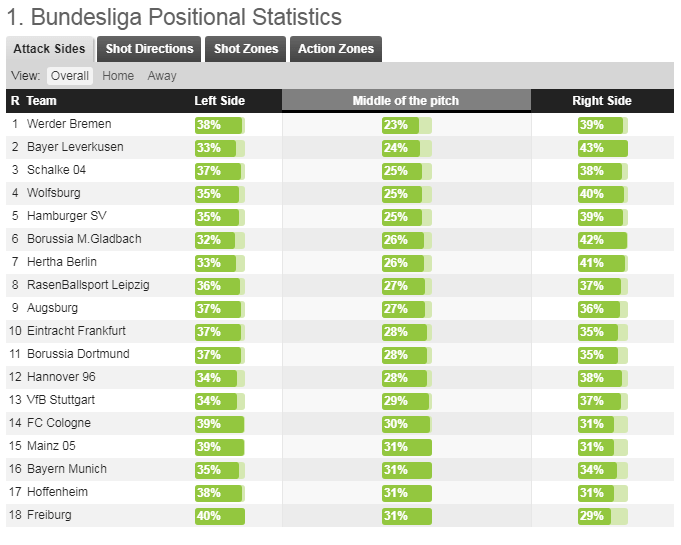
Flexibility in Defense
Whereas Bremen did not change much in their attacking phase throughout the last season, Werder adjusted their defensive approach depending on the opponent.
The deployed formations varied from a 5-3-2 or 5-4-1 to 4-1-4-1 and 4-4-2. Against some teams the press of Werder was man-oriented. For instance, against Schalke 04, Kohfeldt even lined up Gondorf to man-mark the agile Amine Harit. Bremen nearly played man against man all over the pitch.
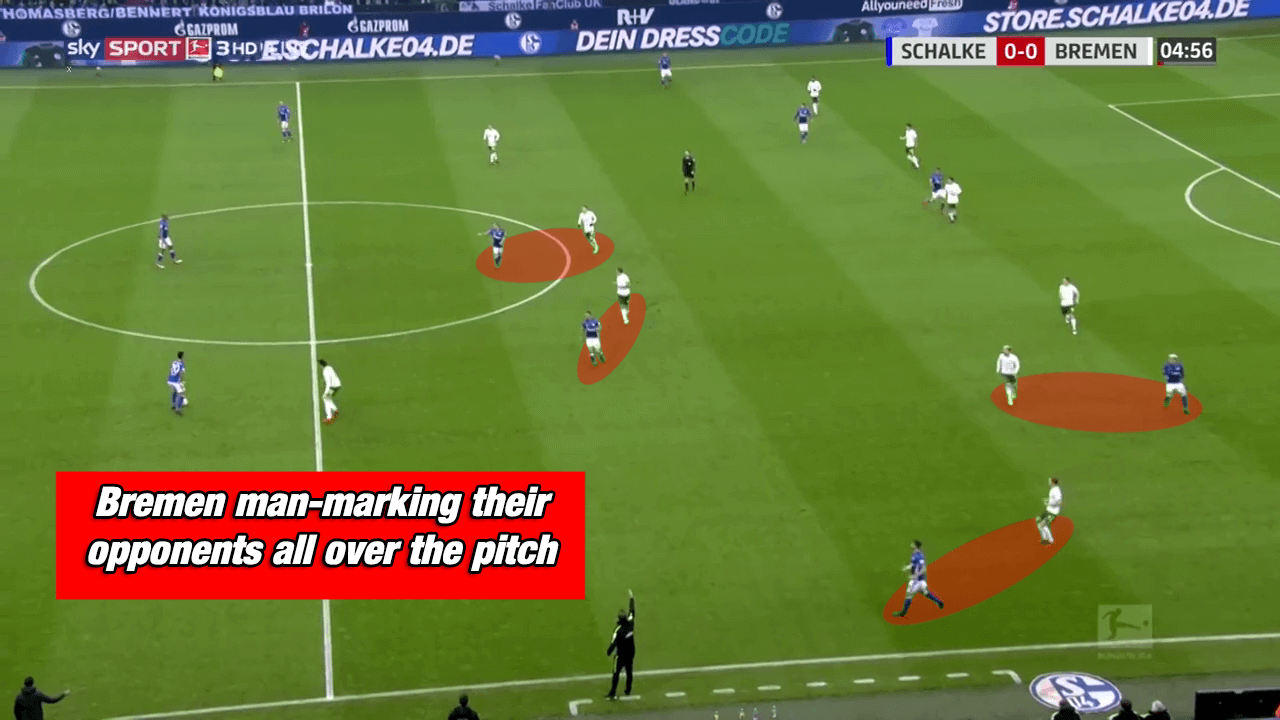
In other matches, the defensive approach was to reduce space with low lines and zonal marking. In these situations one of the midfielders, mostly Bargfrede, dropped into the last line of defense to create a back-five and thereby strengthened the center. Distances between the lines were kept low to decrease the number of passes into these areas. This lead to a very flat formation as you can see below.
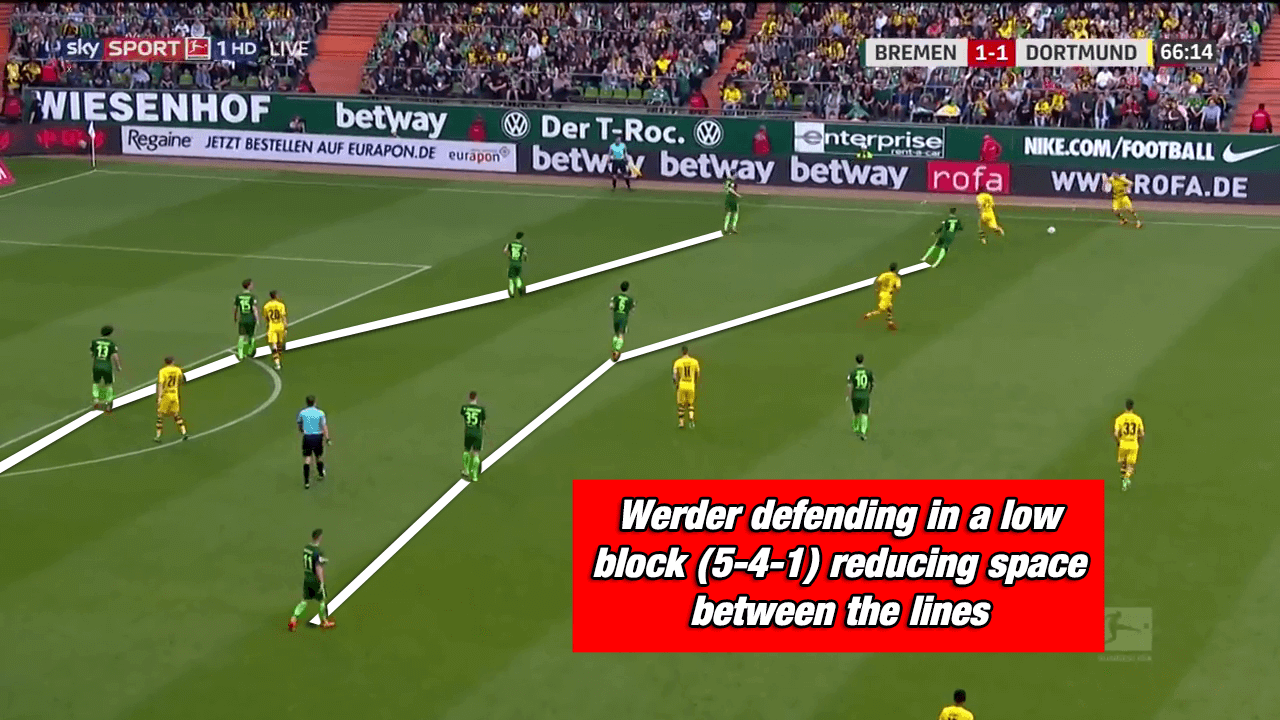
This variability makes Werder Bremen really unpredictable. Bremen can react on the strengths and weaknesses of the opposition and make use of it.
However, Kohfeldt’s side revealed some weaknesses in defending crosses during the last season. Time will tell whether Werder’s coaching staff was able to fix this issue for this season.
Key players
Thinking of players that are vital for Bremen’s play, it is obvious that most people think of Max Kruse first. In addition to his important role on the pitch as a fluid playmaker, he also was announced as the new captain of the team. Playing as a false nine, Kruse is thinker and finisher at once. The heatmap below proves that Kruse does not keep his position but helps wherever he can. With his intelligent off-ball-movement, he tries to create numerical and positional superiority in every phase.
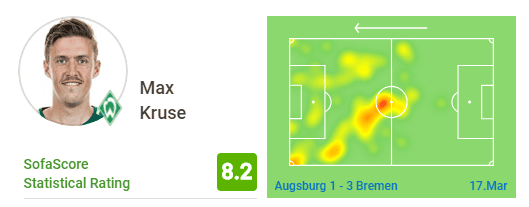
Jiri Pavlenka is without any doubt one of the biggest surprises of the last Bundesliga season. The goalkeeper saved his team points in several matches with incredible saves. Although his short passing skills are not above average, the Czech showed some precise long diagonal balls in difficult moments of build-up.
Ludwig Augustinsson perfectly fits into the system of coach Kohfeldt and thereby plays an important role in Werder’s play. Situationally, the Swede supports the attack with overlapping runs and helps with his ability to play good crosses.
Apart from these players, Bargfrede in the central midfield always balances offense and defense and covers a lot of attacks. Moreover, Werder has got plenty of young players who have already made the breakthrough or will possibly make it in the near future. Eggestein and Veljkovic are the already established players and Rashica, Käuper as the back-up for Bargfrede as well as centre-back Friedl will wait for their chance.
Transfer period
Most changes of the Werder squad happened in their midfield and the attack.
The losses of Delaney who signed a contract in Dortmund and Zlatko Junuzovic tore a big hole in Werder’s central midfield. Junuzovic was the former captain and Delaney convinced with great performances.
The biggest coup of the transfer period succeeded manager Baumann with the signing of Davy Klaassen. The Klaassen deal with a transfer fee of €13.5m was the most expensive transfer in the history of the club. Klaassen is an offensive-minded central midfielder who already knows how to act in a 4-3-3 from his time at Ajax.
Kevin Möhwald from Nürnberg might also play on one of the advanced central midfield positions. With his dribbling qualities and the ability to do layoffs, Möhwald might be of use in the final third.

Furthermore, Werder signed old acquaintance Martin Harnik from Hannover. He might be the solution for the problem of a missing “penalty-box striker” with finishing qualities.
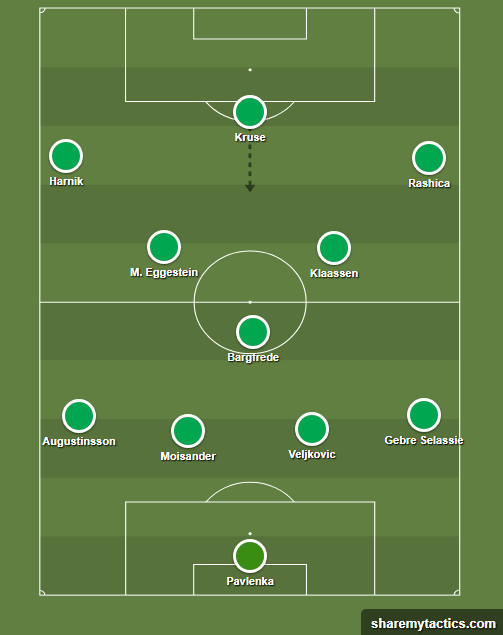
Yuya Osako from FC Köln is another new option for the attack. The Japanese brings high technical abilities and might play as a centre-forward instead of Kruse or as a winger converting into a striker, when the false nine drops. Osako showed intelligent off-ball-movement in the past and could thereby create more space for other attackers.

Further signings as Beijmo and Pizarro will not be options for the first eleven, although Pizarro can help the team with his finishing skills as a joker. Full-back Beijmo will need time to develop and eventually replace Gebre Selassie in a long term.
Conclusion
Werder will have a competitive starting line-up in the beginning of the new season. Circumstances will decide whether Werder can achieve more than just staying out of the relegation battle which will be their primary goal as Die Grün-Weißen have very young back-ups on key positions.
However, things might go back to normal since Bremen might have found a long-term solution for the head coach position in Florian Kohfeldt. With former players like Baumann as their manager and the comeback of Schaaf as an advisor for the club, Bremen go their own path, no matter what happens.





Comments